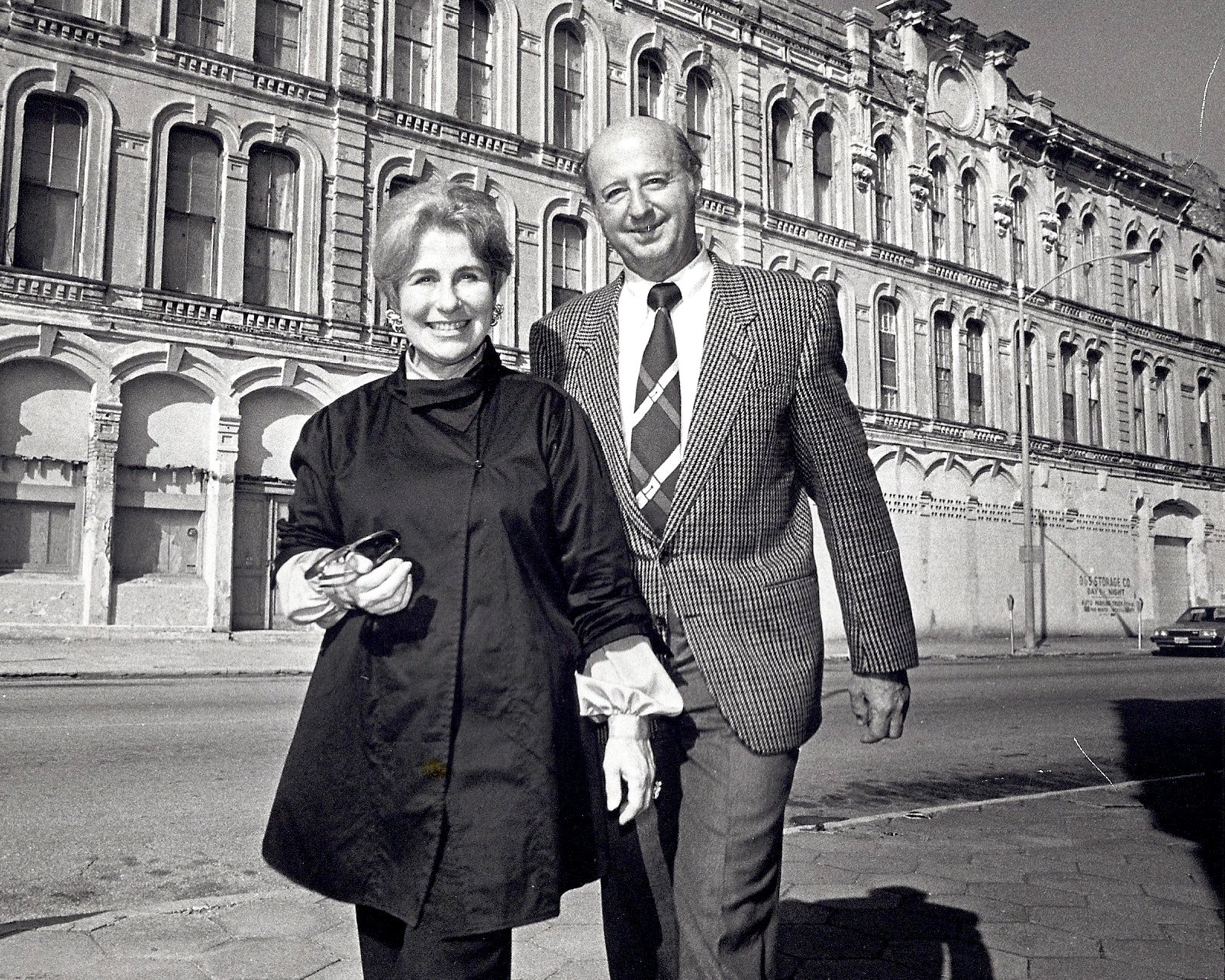Four ways values inspire and ground our grantmaking

One reason many families create foundations is to pass down philanthropic values through the generations. My grandparents founded the Cynthia and George Mitchell Foundation to support the issues they cared most deeply about and also to ensure that the specific values they championed throughout their lifetimes would continue to live on when they were gone.
My grandparents had 10 children and 27 grandchildren. My grandmother, Cynthia Mitchell, passed away in 2009, and my grandfather, George P. Mitchell, passed away in 2013. With so many family members, each of us has a different memory of what those values were. As in any family, we also have different interpretations of how my grandparents would have wanted us to carry out their legacy. While we can agree on a lot, we also disagree on a lot. Having a list of words that embody the values of Cynthia and George Mitchell is fairly easy; putting those values to work, and creating a grantmaking portfolio that we all can agree on, is much harder.
Several things have made this exercise of defining and operationalizing values easier.
First, one of the gifts I am most grateful for in leading our family foundation is the hours of both audio and video footage of my grandparents speaking about the foundation, their values, and the legacy they wanted to leave. My grandmother died at age 87, and my grandfather died at age 94—we were incredibly lucky to have many years with them, knowing they were planning to leave the majority of their wealth to the foundation and open to having a dialogue about what they wanted for this shared family philanthropy. The first recording we have of them specifically talking about their desires for the foundation is from 1993, and the last is in 2013 (only with my grandfather).
In every board meeting at which we plan to make a big decision about the direction of the foundation, we start by watching a clip of them speaking about their desires on the given topic. If we do not have specific clips on the exact topic, we use clips where they may have spoken indirectly about a related topic—and we pull those together to help us ascertain what it is they may have wanted on the subject.
This footage has been so useful that we now record family-wide dialogues on critical issues so that future generations will have the benefit of seeing the second and third generations discuss key issues and values. Our hope is that those that follow us in this role will better understand why we have made certain decisions and how that might guide future generations by bringing family values into the dialogue.
Second, one of the most critical things we do to help align our values is to learn together. Any time there is a large strategic question facing the board, from financial and governance issues to programmatic direction, we have a learning session to ensure we all have enough information to make crucial decisions. We bring in experts, other funders, knowledgeable community members, or anyone who can help us get a handle on the key decisions and the tradeoffs we must make. These learning sessions help level the playing field by equipping everyone with the knowledge needed to make key decisions. Additionally, these learning sessions are almost always tied to programs and issues that were important to my grandparents. Therefore, in learning about the issues and their importance to my grandparents, we start to understand and agree upon how we might best honor that legacy and accomplish their goals. These learning sessions help pass down their values and passions through the generations.
Third, like many organizations, we have developed a list of values that we aspire to live out in our foundation’s work. These values are explicitly discussed and reviewed in the context of our grantmaking. Every 10 years, we have external evaluators perform evaluations of our impact—they ask grantees, partners, and members of the community to describe the work we do. We look for overlap in what the evaluators present and the list of values we have stated we want to embody. These values help our program team understand what we stand for and how to approach the work—and it gives them the freedom to take risks and be bold in ways that may feel scary (because we explicitly state those as values).
Finally, our discretionary funding is structured specifically to enable the family to pass down philanthropic values through the generations, to allow family members to pursue their own philanthropic passions outside of the mission of the foundation, and to promote collaboration among family members. We know that my grandparents were very generous and very passionate about specific causes; they wanted future generations to continue that spirit of giving to the issues and communities that are important to us. Additionally, the value of inclusiveness is critical in the structure of our discretionary giving—the bylaws specifically outline that family lines must give together in a democratic fashion, with all voices being heard equally.
While there is conflict within our family, as in all families, I am time and again struck by how similar our values are—and how easily we all come to a final conclusion about how to proceed when there is conflict. It is amazing how tying our work back to our founders, specifically to things they said on the record, can help ground us in a way that makes it easier to all get on the same page.
Katherine Lorenz is chair of the Cynthia and George Mitchell Foundation and a senior advisor at the Washington, D.C.-based National Center for Family Philanthropy.
This blog post is republished from the National Center for Family Philanthropy's website.

Hide Full Index
Show Full Index
View All Blog Posts